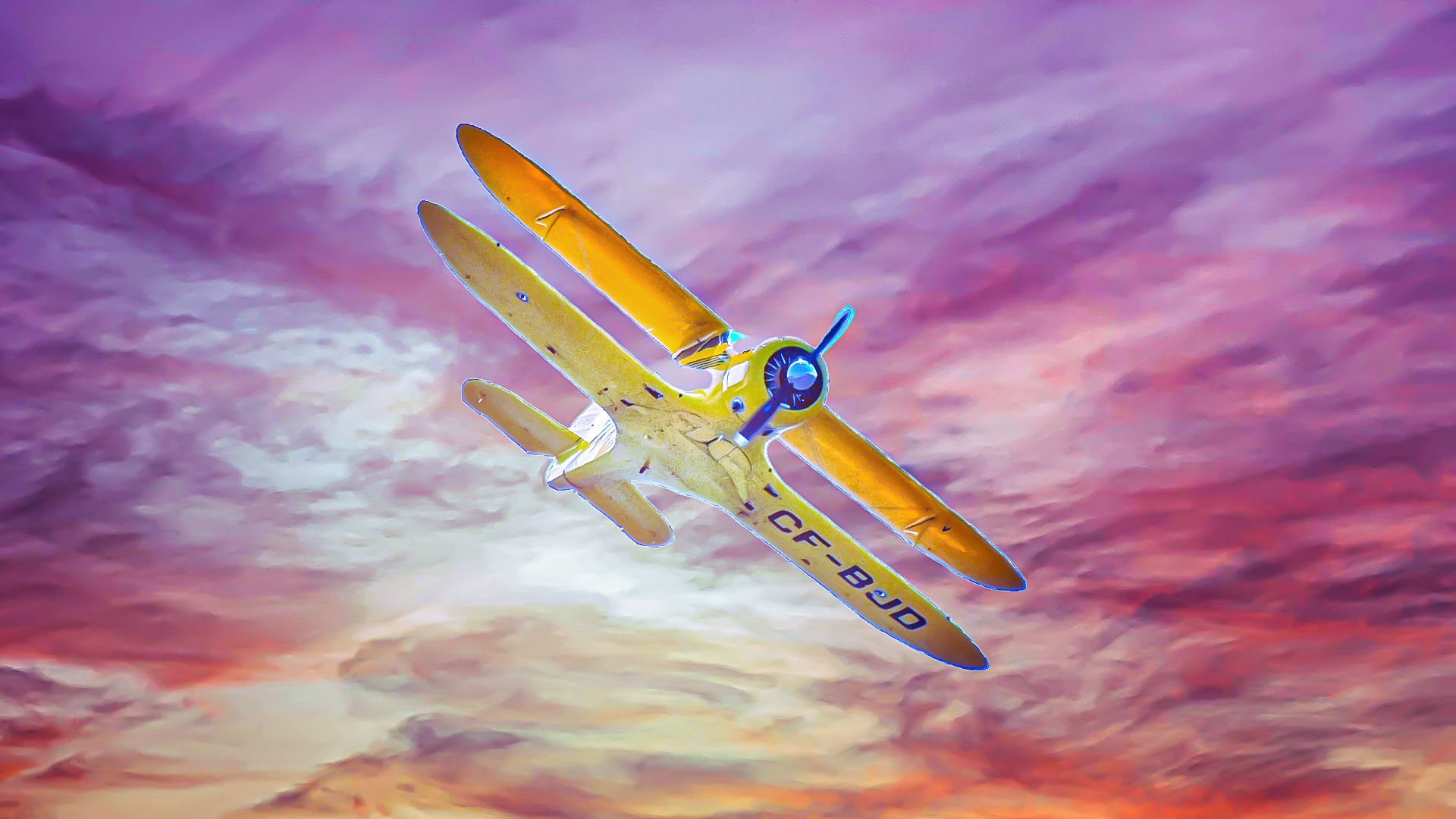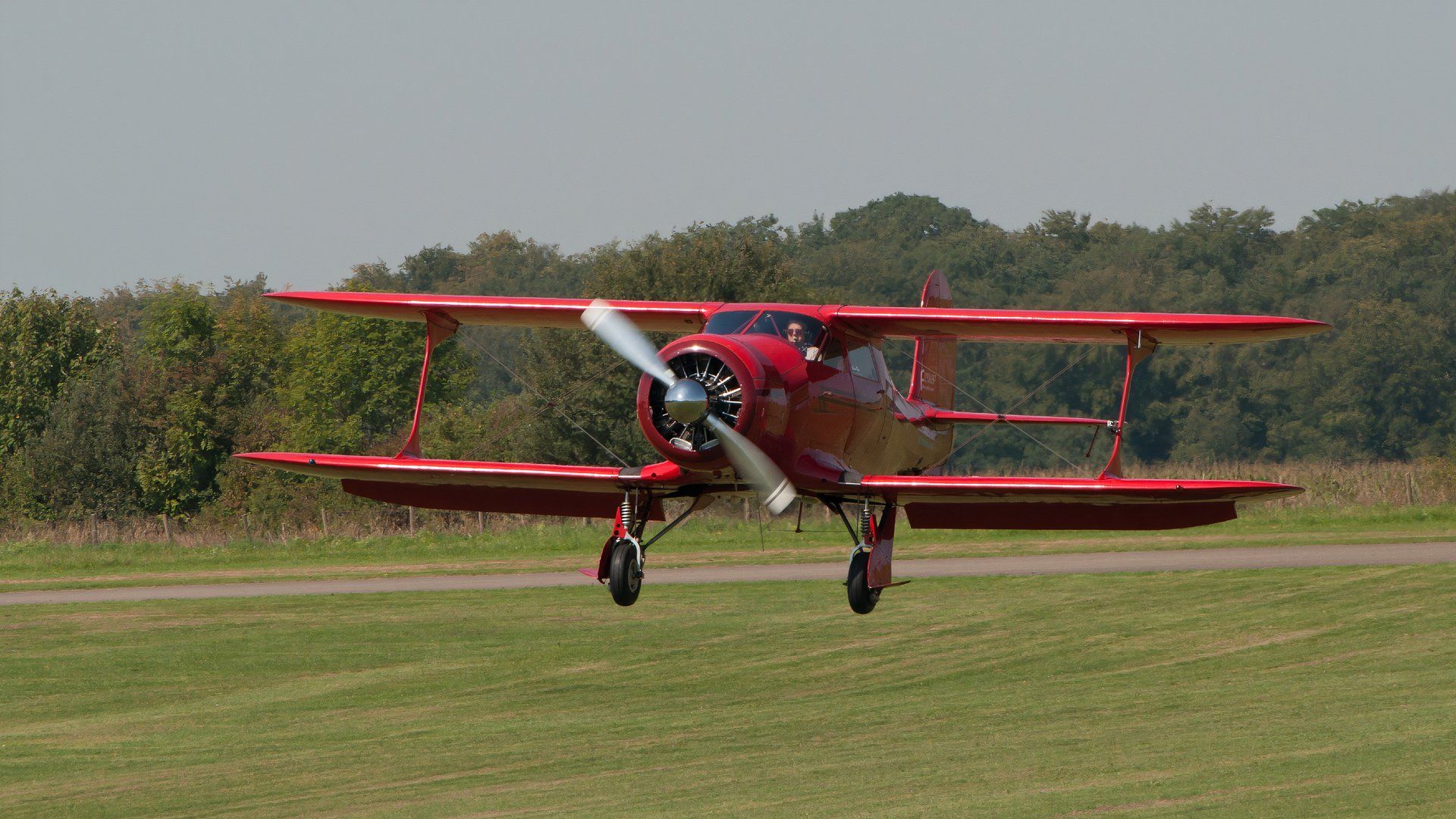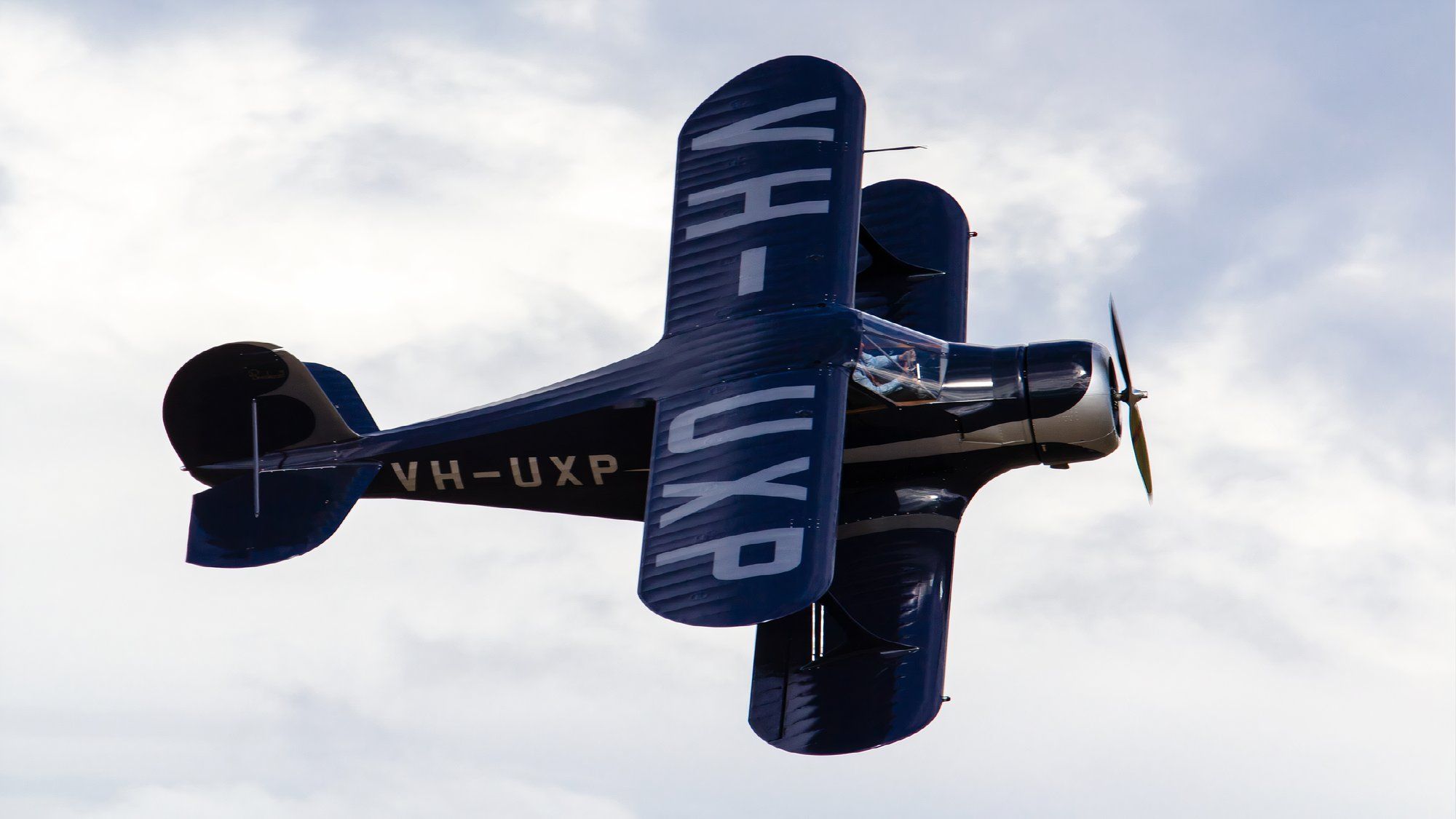The Model 17 Staggerwing was a single-engine biplane first flown in 1932 and designed for business executives that redefined aviation in the early years. Although it was conceived during tough economic times, the Staggerwing became popular and outperformed its purpose. Its powerful features gave it unmatched performance, moving it from a civilian aircraft to helping the military in World War I to an air ambulance.
It flew at a maximum speed of 212 mph and cruised at 202 mph. At that speed, it was among the fastest planes of the 1930s, appealing to both pilots and air racers. Its high performance can be attributed to its retractable landing gear and a Pratt & Whitney R-985 Wasp Junior-powered radial engine. The aircraft’s unconventional wing configuration had many advantages that made the Beechcraft Model 17 a pioneer of luxury aviation.
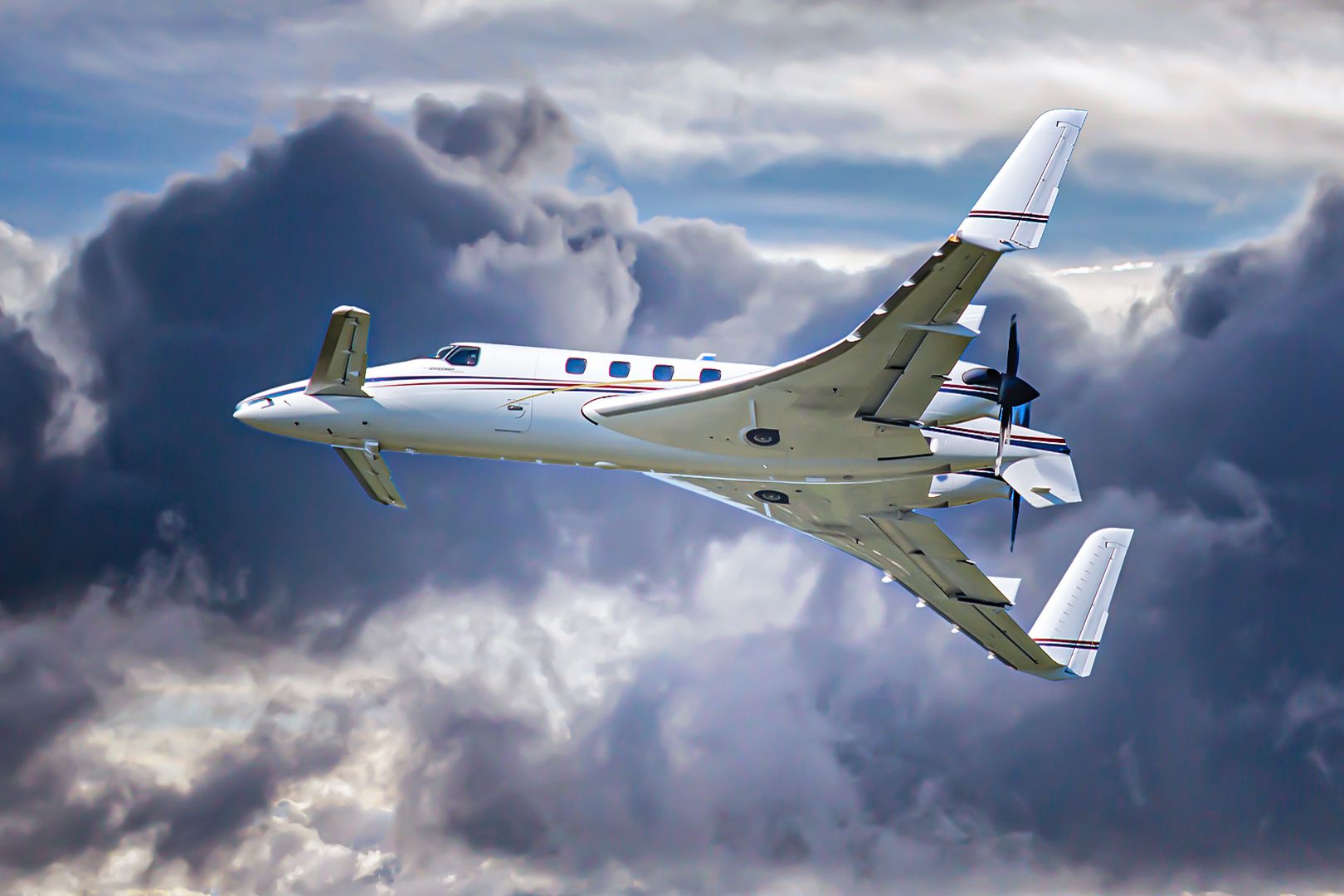
Related
Unique Design: What Happened To The Beechcraft Starship?
The Beechcraft Starship was an exceptional aircraft but production didn’t last. Find out how such a remarkable aircraft turned out to be a disaster.
Designed in the depth of adversity
When the Great Depression began, it affected the operation of some airlines, with the government helping to revive some that had collapsed. The Depression and World War 2 were enough to cause uncertainty and dampen the spirit of innovation for many in the aviation industry. But not the founders of Beechcraft Model 17 Staggerwing. Walter Beech founded the aircraft, while Ted Wells was the chief designer. They knew a high-performance plane would do well for business executives and brought Staggerwing to life.
They made 780 units, whose remarkable speed and performance propelled the aircraft beyond the civilian use it had been designed for. It was faster than contemporary aircraft. To understand the Beechcraft Model 17 cruises at 202mph, while modern aircraft like the Cessna 172 cruises at about 138 mph. Model 17 might have been built during the Depression when people weren’t likely to spend on luxury items, but its sales performed well. Not even the high price tag discouraged sales. By the time World War 2 began, they had sold 424 aircraft.
This is an aircraft that has been every pilot’s delight.
According to Baker, who owned various types of airplanes,“The Staggerwing is the airplane I always wanted more than any other. I tried to avoid actually buying one, but when the opportunity presented itself recently, I knew I’d deeply regret passing it up.”
Model 17’s unique make
The Model 17, or the Staggerwing, was fast, and every pilot wanted to fly it. They considered it the most beautiful airplane of its time. The Beechcraft Model 17 had a unique wing configuration. It stood out from other biplanes whose upper wings were ahead of the lower, giving them a positive stagger. It was designed with the upper wing slanting back from the lower wing. This positioning gave it a negative stagger, which increased the pilot’s visibility and improved its stability in a stall. The unusual stagger is how the aircraft earned the nickname Staggerwing, which Beech didn’t particularly like, but it stuck anyway.
One of the designs that made a difference in the aircraft’s operation was the electronically retractable landing gear system. This system was still new in the aviation industry—it wasn’t even in military planes! It improved speed and performance by ‘hiding’ the wheels to fold into the aircraft’s fuselage during flight. To understand this concept, think of how birds tuck their wings when diving or flying at high speeds.
Apart from the cabin and engine, other parts of the Staggerwing were covered in wood formers and stringers. It was a complex that took many hours to finish.
The initial Model 17 designs had a basic short fuselage. However, the fuselage was later redesigned and lengthened as part of the aircraft’s improvement. And it worked. The longer one helped pilots control the planes with ease as they landed and took off. The Staggerwing was beautiful inside and out with a spacious cabin with luxurious finishes.
Staggerwing’s specifications
| Specification | Value |
|---|---|
| Maximum Speed | 212 mph (184 knots, 341 km/h) |
| Cruise Speed | 202 mph (176 knots, 325 km/h) |
| Range | 670 miles (582 nautical miles, 1,078 km) |
| Service Ceiling | 25,000 feet (7,600 m) |
| Rate of Climb | 1,500 feet per minute (7.6 m/s) |
| Wing Loading | 14.3 lb/ft² (70 kg/m²) |
| Seating capacity | Up to 5 |
| Baggage capacity | 125 lb |
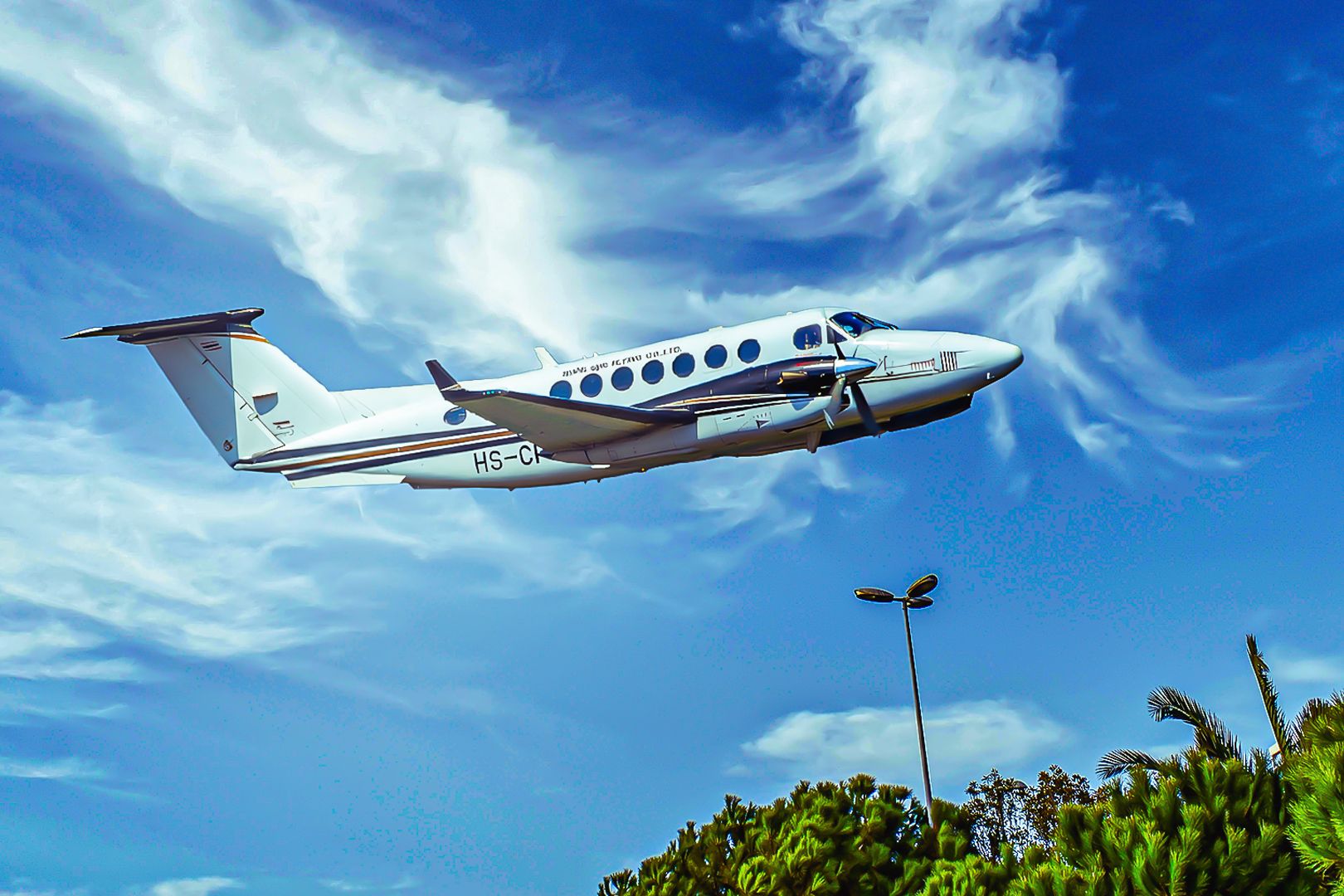
Related
Examined: The Distance Capabilities Of The Beechcraft King Air 360
The extended-range model can fly especially far.
Staggerwing success stories
The Staggerwing made an impressive impact on aviation with successful missions. Beech and Ted Wells built the Model 17 Staggerwing as a civilian and executive plane. But it performed so well that in 1938 the US military bought some units and retrofitted them with parachute seats and military equipment. They went from a civilian aircraft to a war bird!
There’s more. By this time, Staggerwing had proven that it was reliable for combat missions. Unsurprisingly, the Spanish Air Force utilized the aircraft as service bombers during the Spanish Civil War. In their war with Japan, the Chinese also used the Beech Model 17 as an air ambulance.
Away from war, Staggerwing is a true definition of work and play. It participated in racing events and was the first female pilot to win a coveted trophy race in a Model 17 plane. In 1936, Louise Thaden and Blanche Noyes piloted a Model 17 aircraft to victory and made history.
During the 1930s, when long-distance flights faced poor aviation infrastructure, Staggerwing pushed the boundaries, and in 1935, British diplomat Capt. H.L. Farquhar flew 21,332 miles from New York City through Siberia, Southeast Asia, the Middle East, North Africa, and Europe. Farquhar’s flight made the aircraft more popular for long-range travel in that era.
Does Staggerwing still exist?
Of the 785 Staggerwings produced between 1933 and 1949, approximately 200 are still registered, with around 50 actively flying. Aviation enthusiasts and collectors cherish this beautiful legend, restoring most of them to maintain their airworthiness.
Staggerwing’s staggering legacy
Beech dared to build an aircraft when the economy was declining and experimented with aircraft technology. Also referred to as the Gulfstream of the early days, Staggerwing became a pioneer in innovative aviation due to its contribution to military and civilian transport.
What Beech once built for business also succeeded in military, sports, and even medical evacuations. When the Planes of Fame Air Museum received a Staggerwing Model 17 as a donation in 2024, they promised to keep it airworthy. That way, it will be a constant reminder of early innovations.

